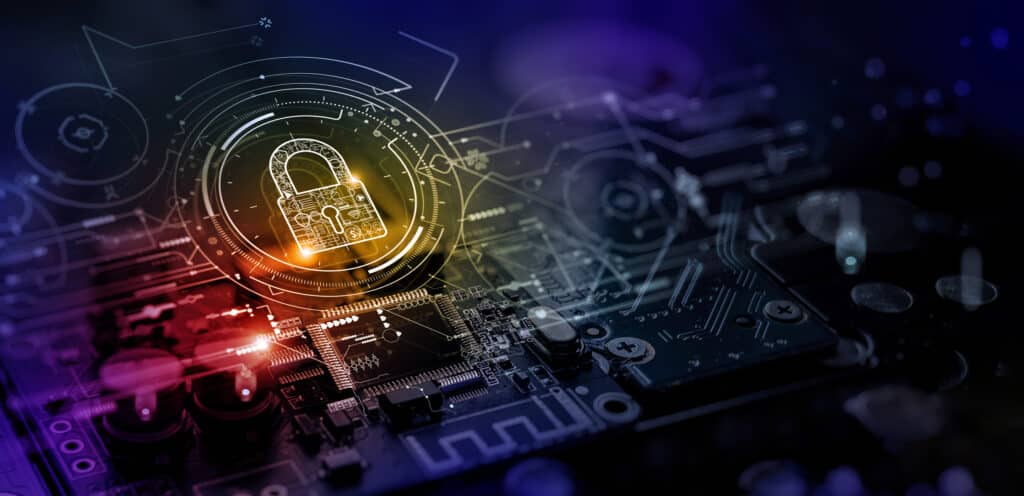Ensuring Digital Fortification: The Imperative of Technology Security for Associations

In today’s digital era, technology plays a vital role in the functioning of associations across various industries. Whether it’s a professional association, trade organization, or nonprofit group, technology has become an indispensable tool for managing operations, connecting with members, and achieving organizational goals. However, with the increasing reliance on technology, robust technology security measures are now a pressing need. Associations hold sensitive data, including personal information, financial records, and intellectual property, making them attractive targets for cybercriminals. This article explores the importance of technology security for associations and highlights key strategies for safeguarding digital assets.
As associations embrace technology to enhance operations and member engagement, it is crucial to recognize the inherent risks and vulnerabilities that accompany this digital transformation. The increasing reliance on technology exposes associations to cyber threats and data breaches, potentially compromising sensitive information and undermining the trust of members and stakeholders. To mitigate these risks and protect their digital assets, associations must prioritize technology security. By implementing robust security measures and adopting a proactive approach to cybersecurity, associations can fortify their defenses and ensure the integrity and confidentiality of their valuable data.
Understanding the Risks
Associations must be aware of the potential risks and threats in the digital realm. Cyberattacks have grown more sophisticated, and hackers continuously evolve their techniques to exploit vulnerabilities. Associations often handle a vast amount of sensitive data, making them prime targets for data breaches, ransomware attacks, and phishing scams. Furthermore, the interconnected nature of association networks and their reliance on cloud-based systems increase the risk of unauthorized access and data breaches. Understanding these risks is the first step towards implementing effective technology security measures.
Developing a Comprehensive Security Policy
Associations should establish a comprehensive technology security policy that outlines the organization’s commitment to safeguarding digital assets and member data. The policy should include guidelines for data protection, password management, access controls, device usage, software updates, and incident response protocols. By clearly defining expectations and responsibilities, associations can create a security-conscious culture within their organization.
Educating Staff and Members
Human error is often the weakest link in technology security. Associations should invest in educating their staff and members about the importance of cybersecurity and best practices for technology usage. Regular training sessions, workshops, and awareness campaigns can help cultivate a security-conscious mindset and ensure that everyone understands their role in protecting the association’s digital infrastructure.
Implementing Robust Access Controls
Associations should enforce strong access controls to prevent unauthorized access to sensitive data. These controls should include multi-factor authentication, strong password policies, and role-based access controls. Additionally, regular reviews of user access privileges and promptly revoking access for employees or members who no longer require it are crucial in minimizing the risk of insider threats.
Data Encryption and Secure Storage
Associations must ensure that sensitive data is encrypted in transit and at rest. Encryption acts as a protective shield, making it significantly harder for unauthorized individuals to access and decipher the data. Additionally, data should be stored securely, either on-premises or with trusted cloud service providers that offer robust security measures and adhere to compliance standards.
Regular Data Backups
Regularly backing up data is essential to recover from any potential data loss caused by cyberattacks, hardware failures, or natural disasters. Associations should establish automated backup procedures, including off-site storage options. Testing the integrity and effectiveness of backups through regular restoration drills is also crucial to ensure successful data recovery when needed.
Continuous Monitoring and Threat Detection
Associations should employ robust monitoring tools and technologies to detect and respond to potential security incidents promptly. Intrusion detection systems, firewall monitoring, and Security Information and Event Management (SIEM) solutions can help identify suspicious activities, detect malware, and provide real-time alerts. By continuously monitoring their networks and systems, associations can promptly act to mitigate potential risks.
Regular Security Assessments
Routine security assessments, including vulnerability scans and penetration testing, are essential for associations to identify weaknesses in their technology infrastructure. These assessments help uncover vulnerabilities, validate the effectiveness of security controls, and ensure compliance with industry standards and regulations. By proactively addressing vulnerabilities, associations can enhance their overall security posture.
Incident Response and Disaster Recovery Planning
Associations should develop a clear incident response plan, outlining the steps to take in the event of a cybersecurity incident. This plan should include designated response teams, communication protocols, and a clear chain of command. Additionally, associations should have a robust disaster recovery plan in place to quickly restore operations and minimize downtime in the event of a security breach or any other catastrophic event.
Regular Software Patching and Updates
Associations should prioritize regular software patching and updates to address vulnerabilities and security flaws identified by software vendors. Outdated software can become an easy target for cybercriminals, so associations should establish a process for monitoring and applying necessary updates to their operating systems, applications, and security tools.
Third-Party Vendor Security
Associations often rely on third-party vendors for various technology services and solutions. It is crucial to assess the security practices of these vendors and ensure they meet the required standards. Associations should include security requirements and contractual obligations in their agreements with vendors and conduct regular audits or assessments to verify compliance.
Security Awareness Programs
In addition to educating staff and members, associations can benefit from implementing ongoing security awareness programs. These programs can include simulated phishing exercises, cybersecurity quizzes, and regular communication to reinforce security best practices. Keeping security top of mind and encouraging a culture of vigilance can significantly reduce the risk of human-related security incidents.
Compliance with Data Protection Regulations
Associations must comply with data protection regulations, such as the General Data Protection Regulation (GDPR) or the California Consumer Privacy Act (CCPA). Understanding and adhering to these regulations ensures that associations handle personal data responsibly and implement appropriate security measures to protect the privacy rights of their members.
Conclusion
In an increasingly interconnected world, technology security is paramount for associations. The risks associated with cyber threats continue to evolve, making it imperative for associations to adopt proactive security measures. By developing a comprehensive security policy, educating staff and members, implementing robust access controls, encrypting data, regularly backing up data, continuously monitoring for threats, conducting regular security assessments, and other actions as noted in this article, associations can significantly enhance their technology security posture. Safeguarding their digital assets not only protects sensitive information but also fosters trust among members, partners, and stakeholders, ensuring the continued success and sustainability of associations in the digital age.
Tags
Related Articles
To Unleash the Power of AI, Embrace a Digital Mindset
Digital leadership is a new paradigm that calls for a change in behaviors, attitudes, and...
How to Use ChatGPT in Association Work
ChatGPT can be another tool for work efficiency, but there are precautions to take as...
How Associations Can Benefit from an Innovation-Focused Role
What is a chief innovation officer? And how do associations use this role to grow...




